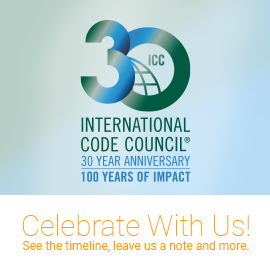
Online workshop examines how codes and policies continue to shape resilience response
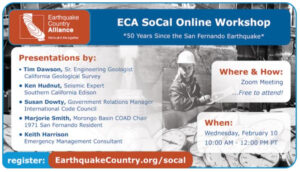 The San Fernando earthquake that struck Southern California on Feb. 9, 1971, was the first to cause significant damage within the Los Angeles region since the period of rapid growth that happened between 1942 and 1967. The impacts on communities, infrastructure and large buildings led to new building codes and land-use policies that have shaped our skylines and our communities (for example, new restrictions against building on top of active faults led to the creation of long and narrow parks, wide streets and other adaptations within new communities). These improvements have also reduced potential injuries and deaths in earthquakes since, and for those to come.
The San Fernando earthquake that struck Southern California on Feb. 9, 1971, was the first to cause significant damage within the Los Angeles region since the period of rapid growth that happened between 1942 and 1967. The impacts on communities, infrastructure and large buildings led to new building codes and land-use policies that have shaped our skylines and our communities (for example, new restrictions against building on top of active faults led to the creation of long and narrow parks, wide streets and other adaptations within new communities). These improvements have also reduced potential injuries and deaths in earthquakes since, and for those to come.
Susan M. Dowty, P.E., S.E., regional manager in the Government Relations department of the International Code Council, joined emergency management consultant Keith Harrison, Southern California Edison seismic expert Ken Hudnut, California Geological Survey senior engineering geologist Tim Dawson, and Morongo Basin Community Organizations Active in Disaster Chair Marjorie Smith in an online workshop for the Earthquake Country Alliance SoCal on Feb. 10, 2021. The workshop — 50 Years Since the 1971 San Fernando (Sylmar) Earthquake: Lessons Learned that Shape and Protect Our Lives Today — reflected on the evolution of building codes since the 1971 San Fernando (Sylmar) earthquake.
Dowty presented “Building Codes: Then and Now” and discussed the history of the seismic event, a general overview of building codes, how the codes and policies continue to shape our environment and our lives today, and how we all can advocate for continued improvements to our resilience. The transcript of her presentation is provided below.
Thank you so much. Good morning everyone. I am so privileged and honored to be here as part of this panel discussion.
My name is Susan Dowty and I am a government relations manager for the International Code Council. I have been with the Code Council for a little over five years and I have been involved in the development of seismic code provisions for more than 30 years. I am very happy to be here today to talk about building codes, then and now.
The Code Council is a national nonprofit organization with more than 64,000 members, that facilitates the development and implementation of model building codes. Our membership includes state and local code officials, who are charged with implementing their jurisdiction’s adopted codes, as well as design professionals and members of the construction industry. Our Western Regional Office is located in Southern California, in Brea, and that’s where I’m based.
The earliest seismic code provisions in the United States dates back almost 100 years and were found in the 1927 Uniform Building Code (UBC). The UBC was published approximately every three years between 1927 and 1997 and was used predominately in the western United States. I used to work for the company that published the UBC — the International Conference of Building Officials — and I would always say that our code was used predominantly west of the Mississippi.
My presentation is on “Building Codes: Then and Now”, with “then” being Feb. 9, 1971, and “now” being 50 years later. When I told a friend that I was presenting on this topic, he said ‘Oh that’s easy. Then the code was thinner and smaller in size and now the code is thicker and larger.’ Well, yes, that’s true, but the good news is that buildings designed by today’s codes and standards are much more resistant to seismic shaking and that’s because there have been many, many lessons learned between then and now. Evidence from past earthquakes indicates adoption and enforcement of the latest building codes is one of the most effective seismic mitigation strategies available to communities.
When I started my career back with the company that published the UBC in 1986, there were a number of earthquakes that provided a laboratory for building code provisions. We got to go out and see how the buildings performed and study the issues that were identified and then code changes would evolve from that.
At the time of the San Fernando earthquake, the 1970 UBC was current, and obviously, structures that experienced the 1971 earthquake were a large inventory of structures of which some dated back to before the 1927 UBC. The 1970 UBC reflected lessons learned from prior earthquakes, including the 1933 Long Beach earthquake and the 1964 Alaska earthquake and forces were increased and limitations were placed on different types of construction because of these earthquakes.
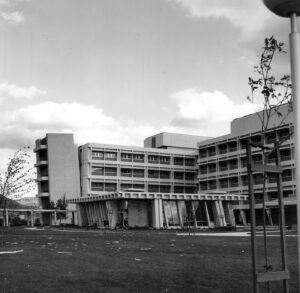
The San Fernando earthquake on Feb. 9, 1971, resulted in widespread damage to buildings, including two major hospitals. One was the brand-new Olive View Hospital and the other was the Veteran’s Administration Hospital where two major structures collapsed killing 46 persons, which accounted for most of the casualties in the earthquake. The deaths and damage from this earthquake caused important legislation to be passed both at the state and national level that contributed to changes in the codes.
The first one, the Alquist Seismic Safety Act passed in 1973 in California, established a seismic safety building standards program applicable to hospitals built on or after March 7, 1973, to be overseen by the Office of Statewide Health Planning and Development (OSHPD). The act required that acute care hospitals be designed and constructed to withstand increased earthquake forces with the intent they remain operational immediately after the quake. So that’s an important concept, where the performance objective for hospitals was determined to be different than for the rest of the structures. I’ll refer to this a little later on.
The California Seismic Safety Act passed in 1975 established the California Seismic Safety Commission. The commission performs research on earthquake-related issues and recommends policies and programs to the governor and legislature to reduce the risks and damage that can result from a major earthquake. It also investigates and evaluates earthquake damage and the reconstruction that follows earthquakes. Just recently with the Ridgecrest earthquake, the Seismic Safety Commission was in the field immediately doing exactly that.
At the national level, Congress authorized the very important National Earthquake Hazards Reduction Program (NEHRP) in 1977. NEHRP performs many different functions, focusing its efforts on earthquake-related monitoring and research, building codes and standards, technical guidance, awareness, education, and state earthquake grants. The four federal agencies involved are the Federal Emergency Management Agency, the National Institute of Standards and Technology, the United States Geological Survey, and the National Science Foundation. The development of seismic design provisions in our building codes and standards are fueled by design guidance created under this program.
I have been involved with the NEHRP program and the seismic design provision guidelines for many years, and these are really the first stop before the provisions find their way into the building code.
Related:
Special report on recommendations for post-earthquake re-occupancy and functional recovery time
San Fernando earthquake changed how we prepare for quakes
Preparing for the worst through shared experience and expertise
Seven thoughts about earthquake resilience and COVID-19
Now let’s change our focus to how the code changed after the San Fernando earthquake. Fortunately, with the UBC being updated every three years, lessons learned from the 1971 earthquake could be incorporated as new code provisions in the next code, the 1973 edition. As noted, they included new seismic requirements for connections, irregular structures, suspended ceilings and storage racks.
But it didn’t stop there.
There were more changes that followed in the 1976 code. They weren’t all done with the 1973 code because it took more time to study the problems and create code solutions.
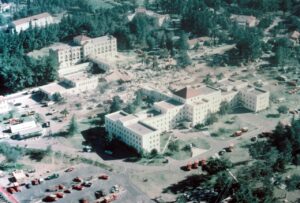
I’d like to use this opportunity to share that at no point, not then and not now has the building code promised an “earthquake-proof” building. The code is intended to set forth the minimum requirements to safeguard the health, safety and welfare of building occupants. I always emphasize that the building code sets forth minimum requirements with the option of doing more. The code has aimed for a life-safety performance objective, to save lives and allow occupants to safely exit buildings. This can be a difficult concept to convey to the public. But there is an exception to this life-safety performance objective. Because of the extensive damage to the Olive View and Veteran’s Administration hospitals in the San Fernando earthquake, the traditional life-safety performance objective got raised to an immediate occupancy performance object for certain types of structures called essential facilities, which include hospitals, police stations and fire stations. I think you’ll agree that it makes sense for uses to be operational after an earthquake and that’s what the code change in the 1976 UBC was aiming to accomplish.
Up until the 1990s, there were three building code publishers in the United States. In 1994, the International Code Council was formed with the purpose to publish one building code as opposed to three different and competing codes. The Code Council worked through the 1990s creating new codes using a publicly transparent consensus process that included input from the public, government and the design and construction trades. Several technical committees worked to blend the best of the three codes into one. I was the structural secretariat for the first edition of the International Building Code and I got to work with all three code groups as part of that effort. The 2000 editions were the first published and they have been published every three years since, with the latest being the 2021 edition.
Between 2000 and now, the International Building Code has been published nine times, with one edition every three years. With each code, a code development cycle takes place where new code changes are approved allowing improvements to be made and the latest knowledge and technological advancements to be reflected. The code development process is a governmental consensus process leaving the final determination of code provisions in the hands of public safety officials who, with no vested financial interest, can legitimately represent the public interest.
The National Institute of Building Sciences reported in 2019 that the average West Coast building constructed today is about one and a half times as strong as it would have been under the 1988 Uniform Building Code and that adopting the latest structural codes can provide up to $12 in earthquake mitigation benefits for every dollar invested.
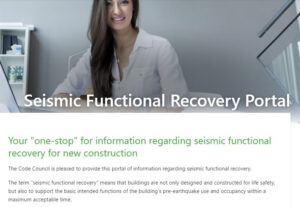 Looking ahead, the code is an absolute minimum and that minimum is life-safety, which means occupants are able to safely evacuate the building in an earthquake, except in the case of essential facilities that need to remain operational. This life-safety approach is based on decisions made over many years in view of societal needs, including economic considerations. What if it’s time to look at the code design philosophy a little differently? What if we took it a step further and buildings were designed and constructed not only for safety but also for the timely recovery of functions and services? Should the code require how functional a building needs to be within a given amount of time after an earthquake? This is referred to as seismic functional recovery. The Code Council has been a leader in the national conversation on seismic functional recovery and has a seismic functional recovery portal on the Code Council website. I invite you to visit the portal for more information on this topic and where we may be headed.
Looking ahead, the code is an absolute minimum and that minimum is life-safety, which means occupants are able to safely evacuate the building in an earthquake, except in the case of essential facilities that need to remain operational. This life-safety approach is based on decisions made over many years in view of societal needs, including economic considerations. What if it’s time to look at the code design philosophy a little differently? What if we took it a step further and buildings were designed and constructed not only for safety but also for the timely recovery of functions and services? Should the code require how functional a building needs to be within a given amount of time after an earthquake? This is referred to as seismic functional recovery. The Code Council has been a leader in the national conversation on seismic functional recovery and has a seismic functional recovery portal on the Code Council website. I invite you to visit the portal for more information on this topic and where we may be headed.
I’d like to close by saying that although we can’t prevent earthquakes, we can save lives and reduce losses by adopting and enforcing up-to-date building codes.
Thank you.
Earthquake Country Alliance, Feb. 10, 2021, Online Workshop: 50 years since the 1971 San Fernando (Sylmar) Earthquake





